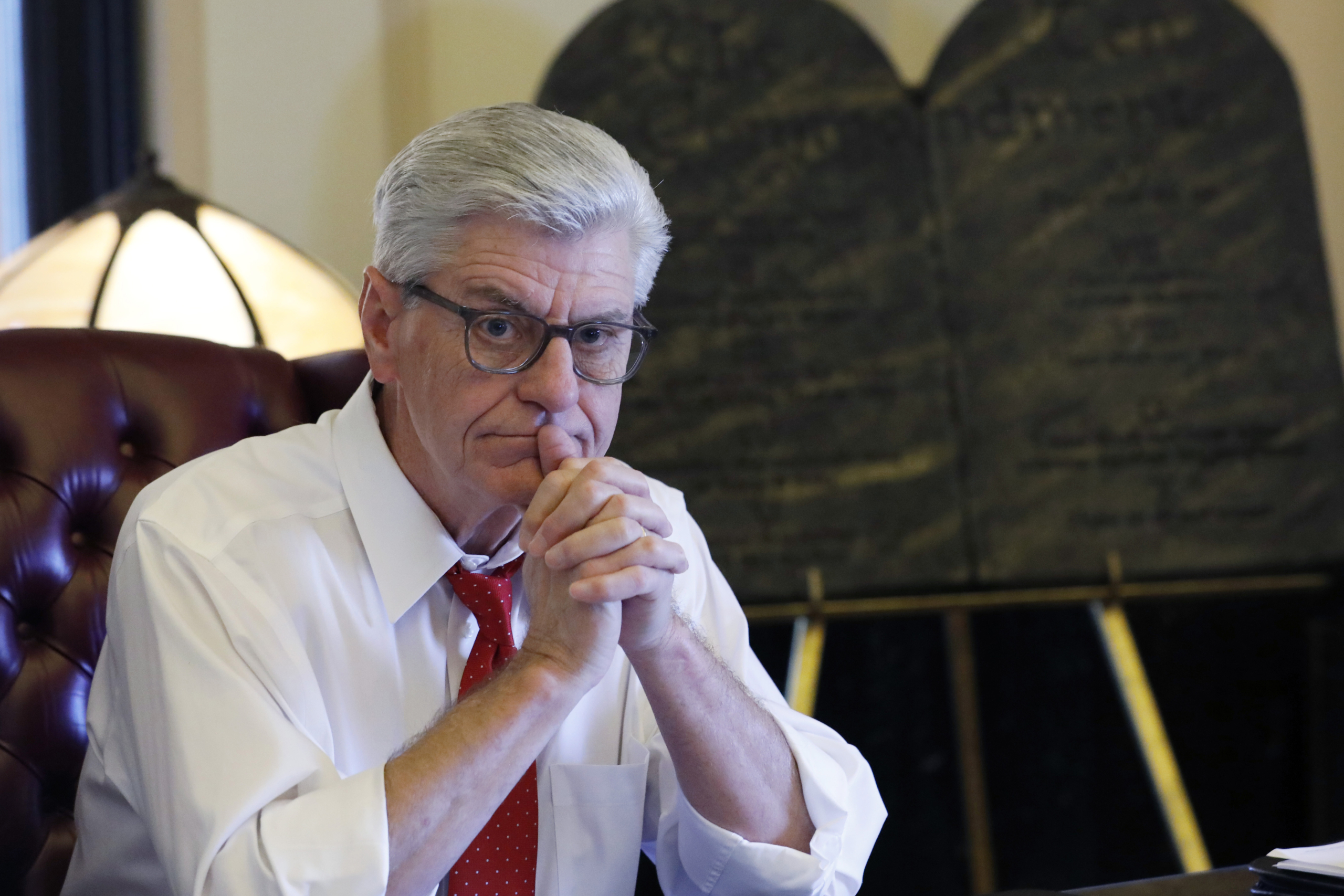Sign up for the daily CJR newsletter.
Mississippi Today reporter Anna Wolfe won a Pulitzer Prize in 2023 for an investigative series describing how Mississippi governor Phil Bryant directed millions of dollars in state welfare funds to projects that benefited his family and friends, among them former NFL quarterback Brett Favre. Bryant sued, alleging that Mississippi Today’s CEO, and also Wolfe and her editor, had defamed him in their public comments. Last week, a judge dismissed the case, sparing Mississippi Today the prospect of being compelled to reveal confidential sources during the discovery process.
Though the legal threat is not over—Bryrant’s attorneys have vowed to appeal—this is a major victory, one that shines a spotlight on what is happening in local media across the country. Some of the best accountability reporting is being done today by local nonprofit newsrooms—from Mississippi Today and its sister publication Verite News in New Orleans to VT Digger in Vermont and the Texas Tribune. But the threats are growing, from local officials and also a federal government animated by President Trump’s fierce anti-media rhetoric. Press freedom and legal organizations are rallying to meet the challenge—and have scored some notable successes.
More broadly, there’s a whole new system of local media emerging across the country, and if you divert your eyes from the terrifying threats to American democracy you can just see it coming into focus. It’s important to recognize the potential especially at a time when journalists and media experts are obsessing about the lack of sustainable business models, the expanding news deserts, the media’s declining influence, and the threat from AI. The concerns are understandable. But journalists and the public we serve also need to believe there is a future worth fighting for.
In my decades as a press freedom defender I often got to know media outlets around the world only after they came under threat. Following the 2006 murder of Russian journalist Anna Politkovksaya, which triggered a broader media crackdown, I made regular trips to Moscow to meet with independent media outlets and offer my support. After Turkey became the world’s leading jailer of journalists in 2012, I spent a lot of time in Istanbul engaging the independent journalists fighting to report freely. In 2017, after Myanmar’s then-leader, the Nobel laureate Aung San Suu Kyi, tired of the free press and began to prosecute her critics, I traveled to Yangon and Naypyidaw to meet with both journalists and government leaders. (Following a military coup, she is now in prison on corruption charges that the United Nations and the United States deemed to be arbitrary and politically motivated.)
Today I’m getting to know local news organizations across the United States who are increasingly concerned about how they can defend their rights and stay safe. In my role as the director of the Journalism Protection Initiative at CUNY’s Craig Newmark Graduate School of Journalism, I’ve been in touch with many US journalists to talk about how they can prepare for the coming onslaught. I often connect them with the network of organizations in this country supporting local media and fighting for press freedom, from the Reporters Committee for Freedom of the Press, which helped support Mississippi Today’s defense, to the Committee to Protect Journalists, which has been hosting safety training webinars and is speaking out about abuses.
But of course the broader concern is about the future of local media itself. Can it serve the needs of American citizens facing unprecedented threats to democracy? One person who thought the answer was yes was John Thornton, the Texas entrepreneur and venture capitalist who is probably the single person most responsible for the creation of this nonprofit media ecosystem. In March, Thornton gave a talk at the Newmark School and spoke about a new world in which nonprofit and other digital-first outlets replace the legacy media across the country. He thought it might take a generation.
When Thornton first became interested in local media, it was as a potential investor. He eventually determined that local media was not a good bet from a financial perspective—but was totally essential for democracy. He described this disconnect as a market failure. In 2009 he helped launch the Texas Tribune and later cofounded the American Journalism Project (AJP) as a “venture philanthropy,” to raise capital and provide support for nonprofit media across the country. To date, AJP has raised $225 million and currently supports fifty news outlets, among them Mississippi Today. “I can say that it’s just profoundly more successful than I would’ve anticipated,” Thornton said.
After the Newmark School event, I spoke with Thornton privately and he told me more about his vision. Because of efficiencies in the digital environment, Thornton believed that a nonprofit with twenty journalists could replicate the work of a two-hundred-person newsroom from the pre-digital era, at least when it came to civic news. It’s true that nonprofits need to build audiences—but somehow the essential information they produce reaches those who need it. People see headlines scroll by in their feeds and they also seek out the civic information in real time and often via search. Audiences for nonprofit news sites often peak on Election Day.
To sustain this new system, Thornton told me, nonprofit news organizations need diversified funding from membership, sponsorship, events, and philanthropy, which will need to support local media in perpetuity, the way they do the arts. It would be nice to imagine a day when public funding was also available—Thornton had no philosophical objection to that concept so long as proper safeguards were in place.
Two weeks after our conversation, Thornton, who lived with bipolar disorder, died by suicide. Sarabeth Berman, who runs AJP, told me she was still reeling and trying to make sense of the loss. Ironically, for someone who had battled depression, Thornton’s ultimate contribution may be his sense of optimism about the future of local media, Berman told me. Thonton was bullish on this new world, and it was infectious.
“If you constantly talk about an industry in decline, you lose talent, you lose investment, you lose a sense of possibility and swagger,” said Berman. “John Thornton had swagger. That was the energy he brought to this.”
A bit of swagger is just what we need right now, because the only way to inspire the public to protect and defend the media they consume is for journalists to believe in their own future. After getting to know the emerging local media in the US, I can say with assurance that this is a fight we need to have and that we can win—in Mississippi and beyond.
Has America ever needed a media defender more than now? Help us by joining CJR today.







